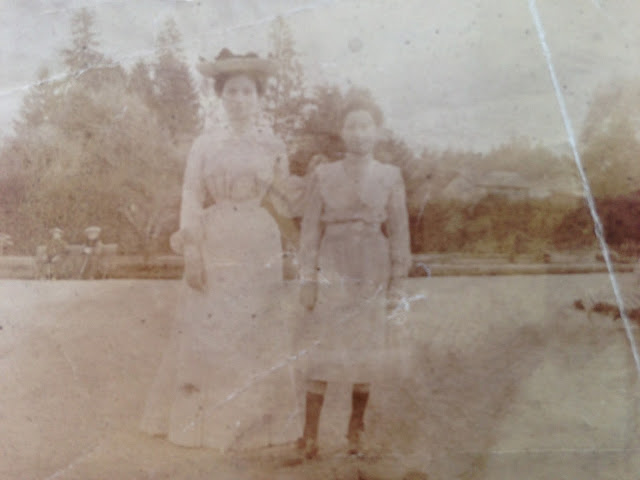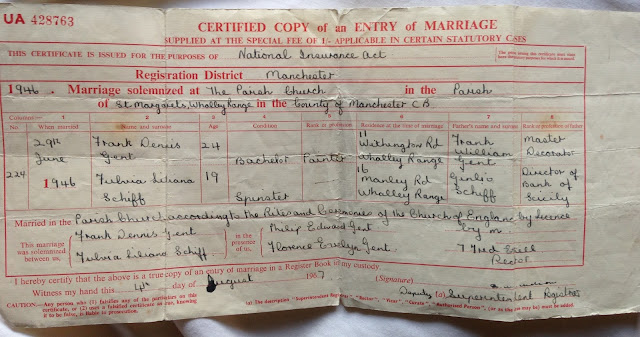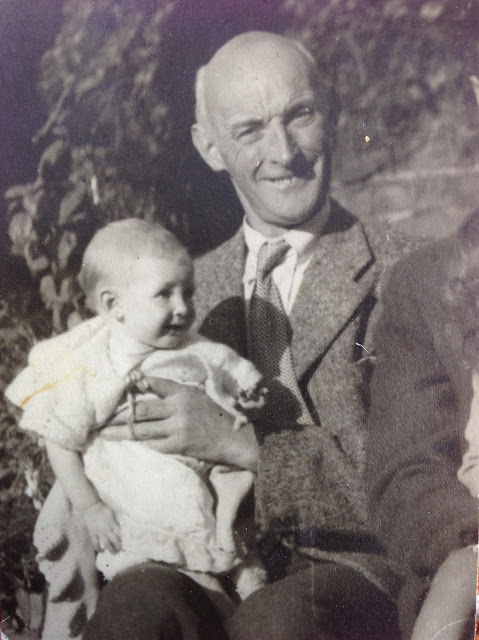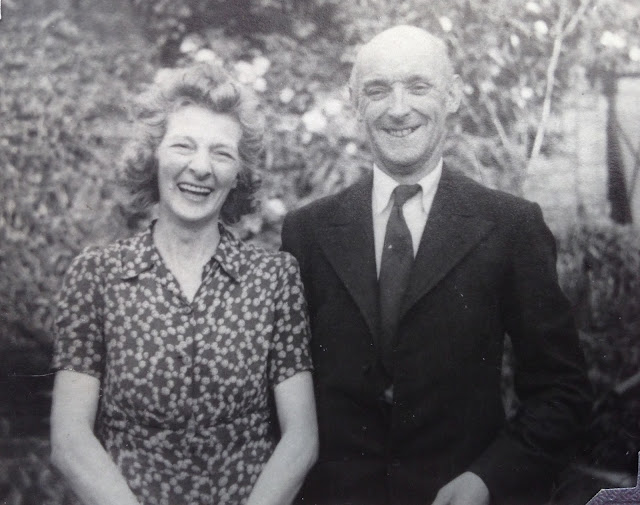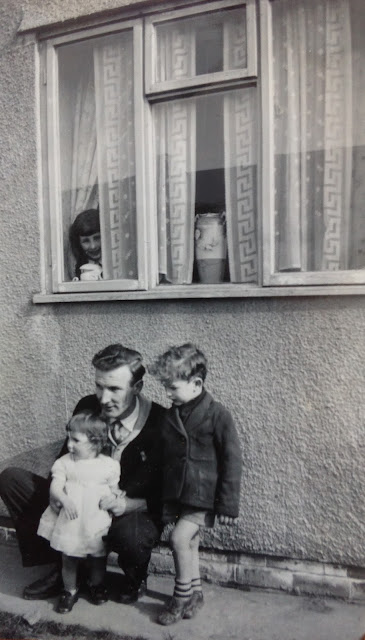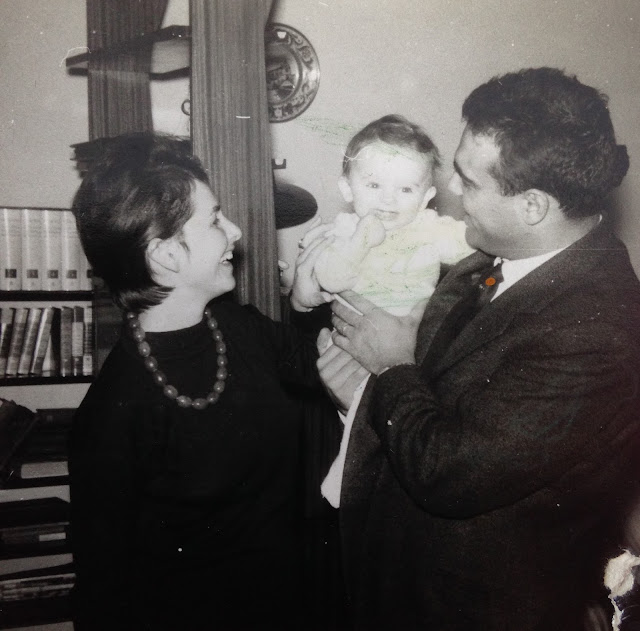I assembled these sources many years ago, as a consequence of learning about new towns of the Middle Ages on my MA course at Leicester university. I was fascinated by Weremundus de Portu Mortuo, who attempted to establish a new town in what is now the tiny hamlet of Hollacombe near Winkleigh in North Devon. Its church was built in the nineteenth century, and when it was put on the market some years ago i went to view it with an eye to possibly buying it, but it had sadly been converted in the worst possible taste.
I make these sources available as I am unlikely to be able to finish the work myself.
The inspirations for this work were Hoskins and Finberg.
I make these sources available as I am unlikely to be able to finish the work myself.
The inspirations for this work were Hoskins and Finberg.
A 13th c. Devon Tycoon
Invisibility of ordinary people except for kings and senior nobles and prelates.
Location: Winkleigh, Hollacombe
Time
Name
1237 Slade
1238 Blackdon
c.1238 William Mills burgage Winkleigh WdPM witness
1242 Winkleigh church to Tewkesbury Abbey WdPM witness
1294 or earlier Chapel of hollacombe Porremore mother church Winkleigh burgages [new towns MA]
1261 Market and fair Hollacombe Mondays and Ascension
1269 collections to vicar
1275 Rotuli Hundredorum WdPM took his 2 tythings away at least 5 years ago
WdPM left to wife Beatrice who married Ralph Ballista [ie no children survived him]
1294 Glebe [ie] to Furse family in exchange for lights
A 13th Century Entrepreneur: Weremundus de Portu Mortuo
Meaning and Significance of Name
wer -man, hero cp Werfrith, Werman
mund - guardian cp Wigmund, ®thelmund, Osmund
The Documents
Roger de Winkleigh [second dean {?}] presented by Bishop Brewer to Winkleigh [p.33 HW]
1237 Slade
Testa Nevil [date?]
Hundred of Tauton
Ref. 1490
As to felons land it is said that the land of Seleda which is in the manor of Tauton, came into the King's hand on the Friday next after the feast of the apostles Peter and Paul [3rd July, 1237] in the 21st year of the reign of King Henry III when Robert of Seleda was hung. Walter de bathon then Sheriff of Devon sold it to Johel de valletorta the lord of the said Robert. The said Johel sold the land to Weremund de Portu Mortuo, and Wormund gave the same to Beatrice his wife. On the death of Wormund, who was accounted a Norman, Ralph Balista, also a Norman, married the said Beatrice, together with the said land, and he holds it still. It is worth yearly 38 shillings.
1238 Blakedon tithes (D & C and Canonsleigh)
D & C 1940
CYROGRAPH[A]
Hec est amicabilis compositio facta Anna gracie millesimo ducentesimo tricesimo octauo die dominica proxima ante festum sancti Michaelis inter Magistrum Willelmum de molendinis nomine Ecclesie sue de Winkelegh ex una parte Et Rogerum Priorem de Canunlegh nomine Ecclesie sue de Deuland ex altera quadiuxerint durata' super decimis peruenientibus de terra de Blakedun Scilicet quod dictus Magister W nomine Ecclesie sue de Winkelegh integre percipiet de eadem peruenientes de terra illa quam Weremundus de Portumortuo recuperauit coram domina Willelmo de Eborac' et eius socus Justiciariis itinerantibus Et duas partes decimarum peruenient' de terra de Blakedun que adhuc in litigio est inter dictum Weremundum et Henricum de Nuni Dictus uerus Prior tertia parte garbarum de dicta terra peruenientum quamdiu litigiosa extiterit [?] percipiet nomine Ecclesie sue de deuland Si ilo sepefatus Weremundus vel heredes sui dictam terram de Blakedun predictem ecclesiam de Winkelegh integre pertinebunt hanc autem compositionem amicabilem firmiter et sine dolo tenendam religione fidei interpositam utraque pars se obligauit Et ad maiorem fidem in posterum faciendam. venerabilis pater Willelmus diuina miseracione Exon' Episcopo presenti scripto in modum cyrographi confecto una cum sigillis pertin' sigillum suim apponi fecit
Hiis testibus
Magistro Waltero de Penbrok tunc officiari' domin' Exon'
Radulpho de Kaluedun
Rogero Corebin tunc Capellanus de Winkeleg
Weremundo de portumortuo
Henrico Gurand et Aliis
Henry Gurand 1238 TN, 1/2 fee Winkleigh Keynes
Also CCA 142
D & C Exon 1941
Sciant presentes et futuri quod ego Willelmus de Bayesdune concessi et vendidi et hac presenti carta confirmaui Willelmo de Molendinis parsone de Wincalege Burgagium meum quod habui in Wincalege silicet illud Burgagium quod jacet a parte boreali curie eiusdem magistri Willelmi Tenundum et habendum sibi et assignatis suis De me et heredibus meis perpetue libere et quiete. Reddendo inde annuatim pro omni seculari servicio et exactione Domino de Wynkalege sex denarios ad quatuor anni reminos. Silicet ad festum sancti michaeli . tres obolos . ad natale tres obolos . ad pasca tres obolos . hoc autem predictum burgagium ego et heredes mei predicto parsone et asignatis suis contra omnes mortales inperpetuum Warantizabimus. pro hac autem burgagio dedit infradictus Mastister [sic] Willelmus per manibus. xxiiijor solidos sterlingorum. Ut hac autem mea concessio et vendicio rata et inconcussa decetero permaneat. Hac presenti carta et sigilli mei impressione illam confirmaui.
Hiis testibus
Waltero de Ba' tunc vicecomite
Weremundo de portu mortuo
Michaele De siccacote
Ricardo de Siccacote
Johanne De colecote
Waltero de colacote
Holberto le gidia
Allexandro tunc serviente parsone
Willelmo russel
Johanne cradoco clerico
Galfrido De La Fenne
et Radulfo tunc de Wynkalege Capelano
Et Multis Aliis
Walter de Bathe was sheriff 1235_6, 1245, 1250_1
Robert Gydia of Heanton Satchville 1332 (DLS)
Dean & Chapter 1942
AD1242
Appropriation by Bishop Brewer to the Dean and Chapter of the church of Winkleigh, to pay pensions due to Abbot and convent of Tewkesbury
Dean & Chapter 1943
Omnibus Christi fidelibus ad quos presentes scriptum perveniet Willelmus de Kaynes dominus de Wynkelegh salutem hominisbus universital' ueram me divine karitatis intuiti omnius pro me et heridibus et assignatis meis remisisse et quietum clamasse deo et ecclesie Beati petri exon' necnon decano et capitulo eiusem ecclesie et eorum successoribus in perpetuum totam sectam et redditum sex denari que me debebant de uno Burgagio in Wynkalegh quem Willelmus de molendiniis habuit de dono Willelmi de Baysdune~~
Hiis testibus
Rob' de Siccavilla de colrigge
Joh' le Blake
Will'o de Radeford
Weremundo de pormore
Will'o de Baysdune
Matho de beaumund
et aliis
Wm de Molendinis vicar
Ralph de Siccavilla T de N 1238
Joel de Beaumund witness Dolton c. 1238
Weremund de Portu Mortuo
Dean & Chapter 1944
[is this deed of 1294? or earlier?]
Sciant Presentes et futuri quod nos decanus et canonici ecclesie sancti Petri Exon' communis assensu et voluntate tradidu concessimus ac presenti sap' vero confirmamus John de la Furse totam terram nostram de sanctuar' Capelle nostre de Holecumbe Porremore ad matrem ecclesiam nostram de Wynkelegh spectantÕ que quid terra jacet in eadem villa de Holecumb in duabus peciis quarum una jacet super la Bronden et altera iuxta burgagia eiusdem villa proxima in boriali parte Habendum et tenendum predictam terram cum pertinentiis suis predicto Johanni et herees suis et assignatis suis
testibus
Willelmo de Campo Arnulphi
Willelmo de Wolryngton
Ricardo le Blund
Johanne de Colacot
Radulph de Legh
Roberto de Covelond
Henrici de Suthcot
John de Campo Arnulphi of Beaford 1275 [RH]
Heir of Oliver de Campo Ernulphi Winkleigh (Gray's bridge Fm and Southcott Fm 1275)
1260 Market and Fair
1261 Feb 18th Tower of London 45 Henry III
Grant, at the instance of Edmund, the king's son, to Weremund de Portu Mortuo and his heirs, of a weekly market on Monday at Holecumb, co. Devon, and of a yearly fair there on the vigil, the feast and the morrow of the Ascension.
AD 1269
Monday after feast of St Lawrence
Bishop Bronescombe at S. Molton assigned Altarage to vicar but to p[ay 3 marks annually to chapter (Reg.43b)
Risdon
According to Risdon, William or Wermond de Portu Mortuo must have been succeeded at Holecombe by John Mosefenne, who released all right in this manor to Henry Barry, in the third year of the reign of Edward I (1274), the witnesses to the release being Robert Risdon and two others. (History of Winkleigh)[must be 1332]
Rotuli Hundredorum 1275
Hundr' de Wynkelegh
D' libertatibus &c
Dicunt quod Rogerus de Keynges habet furc' et assisas pan' & c'visie apud Wynkelegh quo waranto nesciunt. Dicunt etiam quod Wormund de Porremore subtraxit se & facit duas thething' suas peniter se subtrahere a forinseca curia predicti Rogeri domini de Winkeleg iam quinque annos elapsos ad quam curiam semper sequi solebat. Dicunt etiam quod ballivus comitis Gloucester placit' injustam capcom de feodum suis quo waranto ignorant
Veredictum hundredi de Wynkelegh per Willelmum de Capella Robertum de la Furse Ricardum de Sutcote {obiit} Willelmum Bischop Robertum e Capella Rogerum le Blak' Johannem de Collecote Walterum Balbig {obiit} Ricardum de Wynkelegh Willelmum de Radeforde Henricum Laurenc' & Walterum Rufum Qui dicunt per sacraÕm suum.
Que & quot maner' Rex habet &c nichil
Que etiam maner' c`o` solent in manibus regum &c nichil
De feodis etiam domini Regis &c
Dicunt quod Rogerus de Keynges tenet dimidiam feodum in Wynkelegh de domino Gilberto de Clare et est de honore Gloucest'e'
Et dictus Gilbertus comes Glouc' tenet dictam dimidiam feodum de domino Rege in capite et pertinet ad baroniam suam Glovernie.
De terris et tenement' de antiquo dominico corone &c nichil
De firmis hundredum wapent' &c
Dicunt quod hundredum de Wynkelegh est in manu Rogeri de Keynges et idem Rogerus tenet dictum hundredum de domino Gilberto comite Glovernie. Et dictus Gilbertus comes Glovernie tenet dictum hundredum de domino Rege in capite quod hundredum valet per annÕ dimidiam marce & dictus Rogerus habet furc' assis' panis & c'vis apud Wynkelegh quo waranto nesciunt.
De sectis antiquis consuetudinibus et serviciis &c
Dicunt quod Wormund de Bremore subtraxit se et facit duas thethyngas suas penitus se subtrahere a forinseca curia Rogeri de Kaynges domini de Wynkelegh jam tempore quinque annorum elapsÕ ad quam curiam semper sequi solebant.
Dicunt etiam quod ballivus domini comÕ Glovernie placit' injusta capcom` de feodis suis quo wa' ignorant.
De omnibus aliis articlis nichil sciunt.
1279 [?] Ex Winkleigh
Hundr'm de Wynkelegh
ÉDicunt quod Wormund de Bremore subtraxit se et facit duas thethyngas suas penitus se subtrahere a forinseca curia Rogeri de Kayngnes domini de Wynkelegh jam tempore quinque annorum elaps' ad quam quam curiam semper sequi solebant. (second version also)
AD 1275? 100 Rolls
AD1281
Two canons visited Winkleigh church in summer of 1281:Cancellus male coopertus et male fanestratus
AD 1294
Glebe of Holecombe conveyed to Furse family on condition of maintaining a light on Sundays and Holydays, and providing incense.
Testa de Nevill
Weremundus de Portu Mortuo tenet in Halecumb' dimidium feodum de eodem de parte comitis Ricardi.
Henricus Gurant tenet in Wynkelegh dimidium feodum de eodem de parte ejusdem Ricardi.
Henricus de Tracey tenet ibidem unum feodum de eodem et parte ejusdem per medium.
Heres Oliveri de Campo Ernulphi tenet in la Burch et in Suthcoth dimidium feodum de eodem et parte ejusdem.
Hawis' de Curten' est de dom' domini Regis et terra sua de Winkele valet x£ in libero manerio de Wynkeleg'
De terris felonum dicunt quod terra de Seleda in manerio de Tauton devenit in manum domini Regis die Veneris proxima post festum apostolorum Petri et Pauli anno regni regis Henrici xxj_ per suspensionem Roberti de Seleda quam Walterus de Bathon' tunc vicecomes Devon' vendidit Joheli de Valle Torta domino dicti Roberti dictus Johelus dictam terram vendidit Wormundo de Portu Mortuo Wormundus eamdem terram dedit Beatrici uxori sue mortuo Wormundo qui dc's fuit Normannus Radulphus Balista' similiter Normannus dictam Beatricem cum dicta terra desposavit et adhuc tenet que valet per annum xxxviij solidos.
Placita de Quo Waranto (3EdI)
Rogerus de kaynes sum' fuit ad respondum domino Regi de placito quo waranto tenet hundredum de Wynkeley quod ad Coronam domini Regis pertinet. Et quo waranto clam' habere wayf et astrauram furcas emendas assisie panis et cervisie facte in Wynkeley sine licencia etc.
Et Rogerus venit. Et quo ad wayf astrauram furcas et emendas assisie panis et cervis dicit quod hujus modi libertates pertinent ad predictum hundredum. Et dicit quod ipse et omnes antecessores sui tenuerunt manerium de Winkeley similer cum hundredo predicto cum omnibus libertatibus suis ad idem hundredum pertinentibus a conquestu Anglie ex dono et concessione domini Willelmi Regis conquestoris Anglie sine aliqua interrupcione Et quod ita sit petit quod inquiratur per pat'am.
Et Willelmus de Giselham qui sequitur etc dicit quod hundredum est quoddam sp`ale pertinens ad Coronam domini Regis Et desicut nullum sp`ale warantium inde ostendit de domino Rege petit jiudicionem Dies datus est ei a die Pashe in unum mensem coram domino Rege ubicumque etc de and`o jud`o suo. Rot.36
Hollacombe church dedicated to St Petrock
Waormund
| Waormund | |
|---|---|
| Bishop of Dunwich | |
| Appointed | between 816 and 824 |
| Term ended | between 824 and 825 |
| Predecessor | Tidfrith |
| Successor | Wilred |
| Orders | |
| Consecration | between 816 and 824 |
| Personal details | |
| Died | between 824 and 825 |
| Denomination | Christian |
Waormund[a] was a medieval Bishop of Dunwich.
Waormund was consecrated between 816 and 824 and died between 824 and 825.[1]
Notes[edit]
- ^ Or Weremundus or Wærmund
References[edit]
- ^ Fryde, E. B.; Greenway, D. E.; Porter, S.; Roy, I. (1986). Handbook of British Chronology (3rd ed.). Cambridge: Cambridge University Press. p. 216. ISBN 0-521-56350-X.
External links[edit]
Pourquoi PORT-MORT ?
C'est son nom officiel, reconnu par l'Administration. Il est utilisé depuis une époque qui remonte au moins à 1808. En effet, sur le registre paroissial de cette année 1808 et les suivantes, l'orthographe de PORT-MORT est utilisée. La collection de registres paroissiaux, que nous avons pu retrouver, ne remonte pas au delà et nous ne pouvons donc pas dater le moment précis ou l'orthographe précédente de PORMORT a été abandonnée.En effet, avant d'être PORT-MORT, notre village était PORMORT. De nombreux documents, contemporains de la Révolution et des quelques années qui ont suivi, nous prouvent que l'orthographe de PORMORT était alors utilisée. Nous retrouvons cette orthographe sur le plan de la commune daté de 1786-1787. Nous la retrouvons sur les déclarations de propriété faites par tous les propriétaires en 1791, en application d'un décret des 20, 22 et 23 Novembre 1790. Nous retrouvons PORMORT sur la matrice cadastrale établie en 1791, mais sur laquelle on a enregistré les mises à jour des changements de propriété jusqu'à l'an 7. Nous retrouvons également PORMORT sur la carte de Cassini (c'était la carte d'Etat Major de l'époque) éditée en 1757.
Le dictionnaire étymologique des noms de lieux en France indique que cette orthographe de PORMORT pourrait remonter à l'année 1060. Ce même dictionnaire a cependant noté qu'en 1075, un analphabète ou un auteur ironique, a baptisé notre village PORCUS MORTUUS, ce qui en latin pourrait être traduit par "Porc Mort" ou "Cochon Crevé". Des erreurs involontaires ont certainement donné naissance, au cours des temps, à des orthographes approximatives. C'est ainsi que, dans les chroniques des environs de l'an 1200 qui nous sont rapportées par J. Mineray sur Gaillon et ses environs, Blanche de Castille et le futur Louis VIII se sont mariés à PURMOR ou PARMOY. Madame Gautier rapporte, dans le Plutarque Français de 1835, que, "La princesse fut amenée par son père et toute la cour de Castille aux frontières de Gascogne, où elle fut reçue par Matthieu de Montmorenci, qui la conduisit en Normandie; son oncle Jean-sans-Terre vint au-devant d'elle et l'accompagna à PARMOY, où Louis l'attendait."
Si nous remontons encore un peu plus loin dans le temps nous apprenons par le Charpillon (édition de 1868) que Port Mort est cité en 690 dans une chartre de Vandemir sous le nom de PORTUS MAURUS. Cette chartre de Vandemir est ainsi rédigée «Nous donnons au Monastère de PORTUS MAURUS, gouverné par le vénérable Abbé Amalcaire, la petite localité nommée Autils dans le pays de Maderie».
C'est donc, dans cette dénomination de PORTUS MAURUS, qu'il faut rechercher l'origine de l'appellation de notre village. M. Gallais dans la plaquette "Études sur l'histoire de Port Mort", publiée en 1980 par l'Association de Sauvegarde du site de Port Mort, s'y est déjà employé et il signale, fort justement, que c'est une tentative audacieuse car nous manquons de bases précises et de documentation. Nous en sommes réduits aux hypothèses.
Trois hypothèses ont été envisagées :
1) Port-Mort pourrait être un "Port désaffecté". Cette hypothèse est à écarter d"emblée car les 2 ports qui ont existé dans notre village existaient encore jusqu'après la Révolution et ils n'étaient donc pas "morts".2) Port-Mort pourrait avoir été le siège d"une colonie de mercenaires d'origine africaine, comme il en a existé de nombreuses vers le IVème siècle.
3) Port-Mort pourrait être le village d"un habitant appelé Maurus ou Maur, propriétaire d'une grande exploitation. Maur ou Maurus sont des noms assez répandus à l'époque gallo-romaine.
Tout en formulant ces hypothèses avec beaucoup de circonspection et de prudence M. Gallais penche pour cette 3ème hypothèse.
On peut aussi penser, tout en s'entourant de la même circonspection et de la même prudence, que la 2ème hypothèse est également plausible.
En effet, qu'est ce qu'un portus en latin. C'est un port, évidemment, avec tout le sens que nous donnons aujourd'hui à ce mot. Mais c'était plus précisément un abri sur la mer ou sur une rivière. Le sens de portus est donc, sans doute, un peu plus large que celui de port et pourrait désigner une installation sur l'eau servant d'abri. Ce pourrait être, par exemple, le gué, traversant la Seine, au droit de Châteauneuf construit au IVème siècle par les Romains pour relier Eburovice (Evreux) à Bellovaci (Beauvais). La construction de cette route, avec passage à gué à Châteauneuf, nous est révélée dans un mémoire de Maîtrise de Pierre Come Duval en 1980 sur les données d'une étude "Le réseau routier antique"de Baudot en 1932.
Un portus était peut être aussi ce que nous appelons maintenant un pertuis que le Littré définit, entre autre, comme le nom donné sur la rivière Seine aux rapides. Or le gué de Châteauneuf où l'eau passait en bouillonnant entre les pierres était bien un rapide, donc un pertuis ou peut être un portus.
Cette installation avait été réalisée par les Romains, mais la Rome Antique comportait depuis l'an 40 une province, la Maurétanie, divisée en l'an 42 en Maurétanie Césarienne à l'Est et en Maurétanie Tingitane à I'Ouest. Ces provinces occupaient la région occidentale de l'Afrique du Nord et elles étaient peuplées de Maures c'est-à-dire de Maurus dont un grand nombre a pu être incorporé dans les Légions Romaines.
On peut raisonnablement penser que, pour effectuer la manutention de gros blocs de pierre, les Romains ont préféré confier cette basse besogne à des légionnaires d'origine maghrébine, plutôt qu'aux Romains habitant la future Italie, en réservant à ces derniers le métier plus noble des armes.
Nous ne possédons malheureusement pas de documentation permettant d'apporter une preuve à cette hypothèse mais il est cependant permis de penser que le nom de notre village peut provenir de l'utilisation, aux environs du IVème siècle d'un contingent de Maurus à l'édification du portus qui permettait de traverser la Seine à gué.
